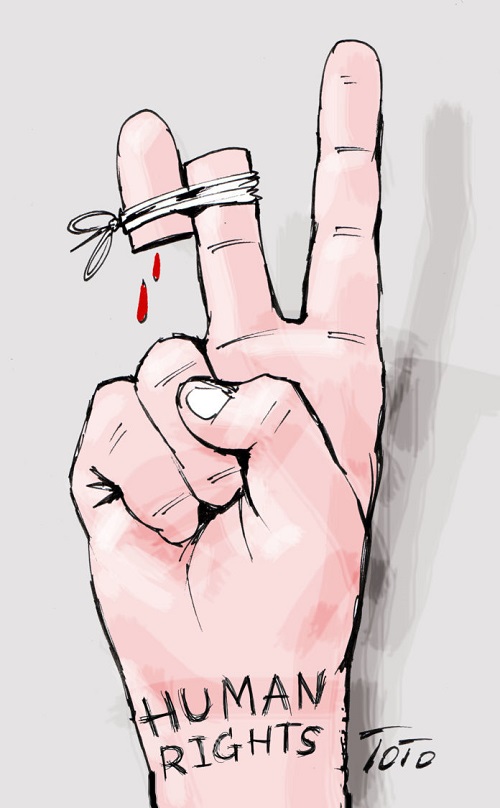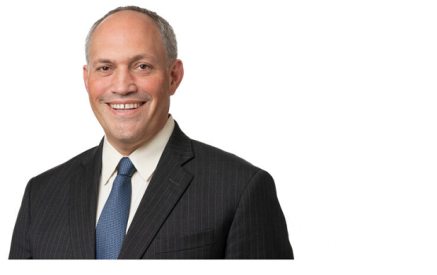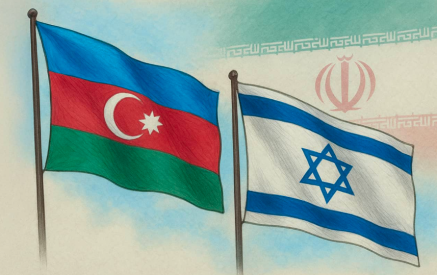The Armenian Mirror-Spectator. The behavior of the Armenian community in Turkey has been defined by fear; fear of expression and action as well as fear of showing their real identities in a society where the dark forces of hatred continue to fester. And there is good reason which justifies those fears: the memory of the Genocide has been transmitted from one generation to the other, even if spoken about only in muted voices.
Children of Armenian descent have been taught at school that they are the progeny of a treacherous race called Armenian and thus they are helped to develop self-hatred.
The Genocide and its historic impact has continued to be amplified by the continuing persecution of minorities through the September 5, 1955 pogroms in Istanbul and through the rigorous application of the wealth tax on Armenians, Greeks and the Jews and subsequent deportations to labor camps in Askale in the 1940s.
As if that were not enough, Turkish government leaders have continually intimidated Armenians. One such example was the statement of President Turgut Ozal, who in 1993 warned that if the lessons of 1915 have not been learned well by Armenians, then they deserve more. Subsequent Turkish leaders, including Prime Minister Tansu Çiller and President Recep Tayyip Erdogan, have not missed opportunities to threaten to expel migrant Armenians in Istanbul.
Read also
The Armenian community was conditioned to live and survive in this kind of intimidating atmosphere, when a different voice was heard — a defiant one. The voice belonged to Hrant Dink; it sent a shiver down the collective spine of the community.
Leaders and citizens alike were stunned that an ethnic Armenian could be rash enough to try to shake off the chains of slavery which had been encircling the obedient minority for so long.
Before delivering his message to Turkey’s general public, he shocked the Armenian community with his choice in the delivery of that message. He began publishing Agos weekly in the Turkish language, allowing only one page for Armenian. While his choice of language made practical sense, many characterized his actions as a betrayal of the Armenian language.
Armenians in Turkey have many publications but in particular two newspapers are considered standard-bearers of Armenianism: Marmara and Jamanak dailies, which continue to be published at the expense of great sacrifices yet always losing subscribers as the community shrinks.
Over many decades, restrictions placed on the instruction of the Armenian language in community schools have eroded proficiency in that language. Instead, Turkish has become the lingua franca for all minorities to communicate with each other.
As the community dwindled on the one side as a result of emigration, younger generations of Armenians from the provinces came to fill the ranks.
Most spoke Turkish only and were able to attain prominence and affluence in the community. Hrant’s initiative met their needs exactly, particularly that generation, who although did not speak Armenian, it did not lack patriotism nor love for its Armenian legacy.
Hrant did not claim to be speaking on behalf of the community, but the conservative circles within the Armenian community were afraid that he would endanger the Armenians’ safety. They greeted him with hostility, particularly when he did not mince his words, criticizing cronyism and corruption within the Armenian community.
Hrant Dink’s message touched a sensitive chord among the youth, but it extended beyond the Armenian community to find resonance among the Kurds, since Dink’s message perfectly matched their liberation aspirations.
In addition, Dink also became a spokesperson for the liberal and educated class of Turks. Many prominent Turkish writers, such as Baskin Oran, became regular contributors to Agos, raising its profile within Turkish intellectual and political circles.
Hrant stood for democracy and human rights. He had an unflinching stance in promoting minority rights. While the Turkish authorities were exerting every effort to erase the traces of any Armenian identity within the current borders of the Republic of Turkey, Hrant Dink, in defiance of that policy, defined his own identity. “I am the bearer of two identities,” he said. “First, I live in Turkey, I am a citizen of the Republic of Turkey…Second, I am an Armenian.”
He began unearthing and publicizing the contribution of the Armenians to Turkish history, language, culture and economy. He hit the motherlode when he discovered that Sabiha Gokçen, the adopted daughter of Mustafa Kemal Ataturk, whom the Turks had sanctified as the first female fighter pilot and in whose honor an airport was named, was an Armenian orphan. This bit of reporting led to him receiving death threats.
His advocacy of the recognition of the Armenian Genocide further aggravated government circles and fanatical nationalists. He was very outspoken about Armenian issues and that is why he was prosecuted three times under the country’s medieval penal code, whose Article 301 is meant to punish any citizen who dares insult “Turkishness.”
Hrant Dink had a messianic mission which required him to think outside the box and defy traditional views which Armenians and Turks had about each other. For the Turks, Armenians were traitors that deserved the punishment they received. For the Armenians, the Turks were unrepentant and unscrupulous killing machines.
Dink saw educating the Turks as a way to reconcile the two.
While Turkey’s accession to the European Union was considered dangerous for many Armenians, Dink believed otherwise. He thought that Turkey’s emancipation from its inward-looking mindset and learning the true facts of history would pave the way for mutual understating and reconciliation down the road.
“When you attempt to implement [recognition] in societies where knowledge is not free, the real paradox appears of its own accord,” he said. And he concluded, “In the end, it is not that Turkish society knows the truth but still denies it; it is defending what it knows to be true.”
Dink’s concept of recognition differed from traditional views. Some eyebrows were raised among the Armenians when he laid down his philosophy by stating: “Real success can only be achieved not with court decisions or restrictive laws, but with the establishment of an environment of debate that will create change in mentality. … Denial or recognition without comprehension will benefit no one.”
At one point, Dink’s message appealed to broad segments of Turkish society. Erdogan’s earlier policies emanated from that atmosphere. Many believed then that democracy was laying its foundations in Turkey. “Turkey has changed,” many would gleefully say to Hrant during his trips abroad, until Erdogan showed his true colors. He showed that he wanted to resort to fundamentalist Islam as the central tenet of his policies, which delivered one victory after another, until he seemed to have achieved invincibility in Turkey and beyond.
To comply with the standards of the European Union, Turkey officially abolished the death penalty. But on the other hand, it settled bloody scores through assassinations and mass slaughter of the Kurds through the activities of the “deep state,” which turned out to be cooperating with the MIT, the Turkish secret service.
The “deep state” had used Ahmed Ali Agca to assassinate a prominent journalist, Abdi Ipekçi, in 1979 and he was set free only to try to assassinate Pope John Paul II in 1981.
The “deep state” had targeted Dink for a long time. However, he felt safe because he was so well-known and so popular. In his last editorial, he wrote that he felt like a fearful dove and added, “In Turkey, people don’t hurt doves.”
For once, he was mistaken. He was gunned down in front of the editorial offices of Agos on January 19, 2007 by a teenager, Ogun Samast, who claimed to be a Turkish nationalist. Police arrested the assassin and treated him like a hero, posing for pictures with him.
Hundreds of thousands of people marched at his funeral with the calls “We are all Armenians,” and “We are all Hrant.”
Although the murderer was charged and sentenced to 13 years in prison, the real masterminds of the crime have evaded true justice.
At the commemorations marking the 13th anniversary of Hrant’s assassination’s, demonstrations were held at his graveside in Balikli Armenian Cemetery and in front of Agos’ former office in Osmaniye district, where he was murdered. Many political figures and journalists spoke. Of particular importance was Garo Paylan’s participation and eulogy during the service. Paylan is carrying on Dink’s legacy and courageously advocating for his cause.
The Turkish government demonstrated its true position vis-à-vis Dink’s memory, by blocking traffic leading to Harbiye, where a commemoration was being held. In addition, the subway station at that location was closed for three hours.
Today, a dead Hrant Dink is more dangerous than when the former living Hrant, as his mission and ideals have caught the imaginations of millions of Turkish citizens. The Turkish government can no longer prosecute him or incarcerate him; he is still alive through his message, now more than ever.
He remains a human rights trailblazer for Turkey and beyond.





















































